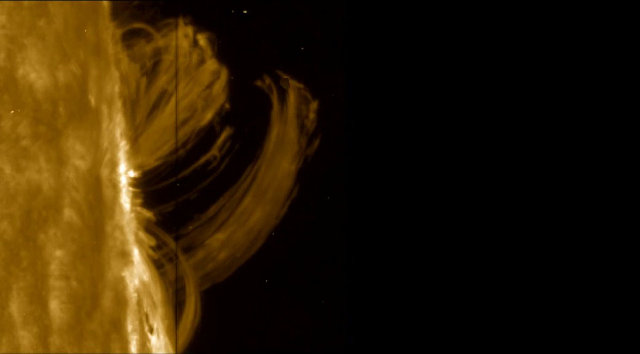
NASA released the images captured by its IRIS space probe that show a kind of rain that fell on the Sun on July 24, 2016. This event occurred during a mid-level solar flare that led to the ejection of solar material, plasma at very high temperatures which then fell like rain and for this reason is called coronal rain or in more technical jargon post-flare loops.
Solar flares are releases of energy emitted by the Sun in huge quantities, which can reach the equivalent of millions of hydrogen bombs. These explosions can be accompanied by coronal mass ejections, particularly large releases of plasma from the solar corona. Normally, charged particles are pushed into space but when there are specific conditions a part of them can end up falling on the Sun’s surface.
The plasma ejected during these phenomena is gas that can reach very high temperatures, up to millions of Kelvins. The particles with positive and negative charges have separated, forming an extremely hot mix that is directed towards paths guided by complex magnetic forces in the Sun’s atmosphere. When the plasma falls forming the coronal rain it rapidly cools from millions to several tens of thousands of Kelvins.
The corona is much hotter than the Sun’s surface, up to several million Kelvins of the corona against about 6,000 Kelvins of the surface. The IRIS (Interface Region Imaging Spectrograph) space probe was launched in June 2013 also to try to solve this mystery. Almost a year ago an explanation was proposed for this temperature’s difference but there are no certainties yet so the investigation continues.
What takes place in the Sun, on its surface and in its atmosphere can have a significant influence on the Earth as well. Auroras are visible phenomena but solar activity can cause other ones, sometimes dangerous such as certain strong eruptions that can damage satellites and even electrical equipment on the ground. It’s for these reasons that it’s important to understand the mechanisms that regulate solar activities and space probes such as IRIS but also other ones were designed.

